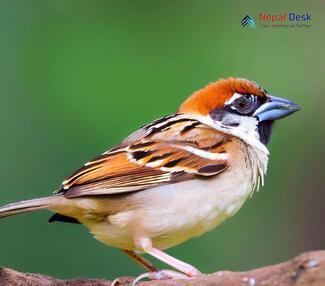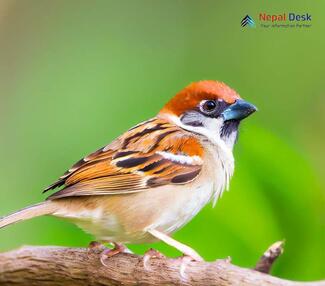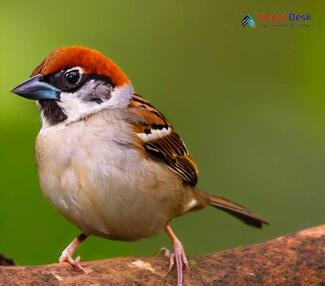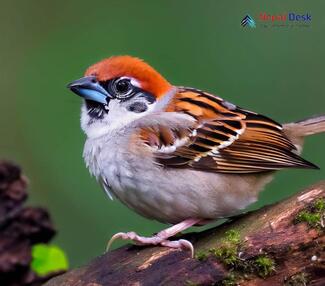Among the plethora of intriguing birds that adorn the varied landscapes of Nepal, the Russet Sparrow (Passer cinnamomeus) is a small yet enthralling species that can be spotted throughout the country. Its unique markings and social behavior make it a fascinating subject for birdwatchers and ornithologists alike. In this article, we will journey into the captivating world of this incredible bird, discussing its distinctive features, habitat, and the part it plays in Nepal's ecosystem.
Russet Sparrow: Traits and Appearance
The Russet Sparrow is a petite passerine bird exhibiting noticeable sexual dimorphism – implying that males and females have slightly varying looks. Male Russet Sparrows bear a remarkable mix of cinnamon-brown upperparts alongside pale underparts marked with mottled dark streaks. Their heads are adorned with chestnut caps, enhanced by black masks encircling their eyes and chin. On the other hand, female Russet Sparrows display a more subdued color scheme, with earthy browns and buff-colored underparts.
Both genders possess strong conical bills that are ideal for cracking seeds – their main food source. Russet Sparrows typically grow to around 14 centimeters long, making them comparable in size to other sparrow species found in Nepal.
Nepal's Diverse Habitats: The Home of Russet Sparrows
Encompassing an impressive range of environments in Nepal, Russet Sparrows can be seen inhabiting woodlands and forests from lowland plains to higher altitudes, sometimes reaching up to 2,700 meters above sea level. They often thrive in rural settlements where they've adapted well to human presence.
These resourceful birds have been spotted nesting in human-made structures like gaps in buildings and eaves, forming a tight bond with local communities. They have also been known to dwell in fruit orchards, farms, and gardens where they can search for seeds, fruits, and insects.
Russet Sparrows: A Crucial Link in Nepal's Ecosystem
As primarily granivorous creatures, Russet Sparrows assist in seed dispersion, facilitating the rejuvenation of essential plant species across Nepal's diverse terrain. Moreover, they serve as a valuable food source for various predators such as birds of prey and shrikes.
Their existence also offers a chance for scientists and bird enthusiasts to analyze connections between avian species and environments influenced by humans. As an important component of Nepal's rich biodiversity, the Russet Sparrow stands as a symbol of the nation's natural legacy and ongoing conservation efforts.
To conclude, the Russet Sparrow (Passer cinnamomeus) holds a prominent and captivating position in Nepal's birdlife. Their alluring appearance, adaptive behavior, and contribution to the regional ecosystem make them an appealing presence for birdwatchers and local communities alike. When taking in the stunning outdoors of Nepal, be on the lookout for these enchanting friends and appreciate their role within this extraordinary country.




